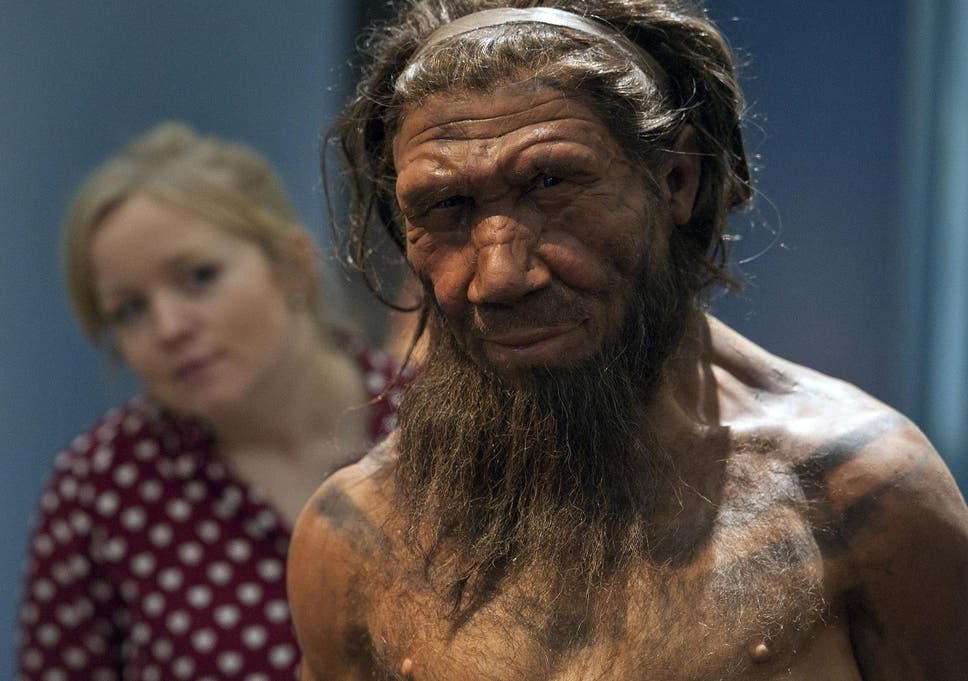Neanderthal Extinction
"Our results support the hypothesis that the disappearance of Neanderthals might have been the result of demographic factors alone, that is, the result merely of the internal dynamics that operate in small populations."
"Our results are consistent with a scenario in which a small population of Neanderthals persists for several thousands of years, and then, due to a stroke of bad luck, disappears."
"The mere fact that the Neanderthals were living in such a small population might have been enough to [make them] go extinct."
"It's not unusual they were living in small populations, either. It's known that they did."
"The arrival of [humans] would have been a contributory factor rather than the cause of the extinction."
"The species' demise might have been due merely to a stroke of bad demographic luck."
"The mere interspersal of AMH sub-populations between Neanderthal sub-populations reduced the opportunities for intrabreeding and migratory activity among the latter."
"As such, the presence of modern humans in Eurasia would have accelerated a process that, at some point, was likely to have occurred anyway."
Research study, Eindhoven University of Technology, Netherlands
 |
| A moulding of Neanderthal man. Photo: Stephane D. Sakutin, AP/Getty |
"We want us to play a role in their extinction, because it helps us to answer the question as to what makes us unique or human."
"So the standard story, according to which modern humans outsmarted Neanderthals, is attractive to us because it implies that our species can be distinguished from our sister species by reference to our superior intelligence."
Krist Vaesen, Associate Professor, Philosophy of Innovation, Eindhoven University of Technology
Published in PLOS One, new research out of the Netherlands has brought out a new theory on the possible cause of Neanderthal extinction. Possibly, the researchers posit from the results of their study, inbreeding was partially responsible. The researchers themselves were somewhat taken aback by the conclusions their research led them to. They ran simulation models that they based on existing hunter-gatherer societies with a view to discovering whether factors aside from human competition might have wiped out Neanderthals some 40,000 years ago.
Obviously, modern humans fell into the category of nature's creatures that managed to adapt and evolve as a species more successfully than did Neanderthals. Earlier research has pointed out that humans and proto-humans lived in fairly close proximity to one another, and in all probability, given that modern science has found Neanderthal DNA in a huge segment of the current population, must also have interbred. Given the larger skull dimensions of Neanderthals it has also been suggested that human females were not that likely to give birth to babies with Neanderthal characteristics; more likely that Neanderthal females more readily gave birth to babies with human features.
 |
| The new exhibition at the Canadian Museum of Nature 'deconstructs' stereotypes around Neanderthals. (Nikola Solic/Reuters) |
There is agreement among Paleoanthropologists of the disappearance of Neanderthals roughly 40,000 years ago, at a time when anatomically modern humans were expanding their presence into Eurasia, steadily migrating out of Africa. Neanderthal populationss, on the other hand, arose in Eurasia. There has never been full agreement, however on whether and when and how early modern humans may have been responsible in part for the demise of Neanderthals.
The researchers simulated model groups of 50, 100, 500, 1,000 and 5,000 individual populations studying the effects within each group, of inbreeding. They included Allee effects whereby the smaller a population the lower its reproduction rate, and vice versa, along with random fluctuations of a population taking into account factors such as births, deaths and sex ratios, the aim being to determine whether factors such as these could conceivably lead to extinction over a 10,000-year period.
 |
| A picture taken on March 26, 2018 shows a thermoforming of a Flores woman displayed for the Neanderthal exhibition at the Musee de l'Homme in Paris. |
The study authors suggest the presence of human ancestors might conceivably have made the presence of Neanderthals more vulnerable to the factors involved in the study, before extinction. But they are also convinced that the human presence was simply coincidental to the final extinction. Which caused the researchers themselves to entirely revise their own former belief, common among paleoanthropologists that homo sapiens contributed hugely to the obliteration of the Neanderthals.
 |
| What caused the extinction of Neanderthals after 350,000 years on the planet remains a point of debate for experts ( PA ) |
Neanderthals have contributed approximately 1-4% of the genomes of non-African modern humans, although a modern human who lived about 40,000 years ago has been found to have between 6-9% Neanderthal DNA (Fu et al 2015). The evidence we have of Neanderthal-modern human interbreeding sheds light on the expansion of modern humans out of Africa. These new discoveries refute many previous hypotheses in which anatomically modern humans replaced archaic hominins, like Neanderthals, without any interbreeding. However, even with some interbreeding between modern humans and now-extinct hominins, most of our genome still derives from Africa. Neanderthals could not have contributed to modern African peoples’ genomes because Neanderthals evolved and lived exclusively in Eurasia and therefore could not have bred with the humans living in Africa at that time.
Smithsonian National Museum of Natural History
Labels: Extinction, Neanderthals, Paleoanthropology, Science

0 Comments:
Post a Comment
<< Home